Reproduction of cyclamen at home
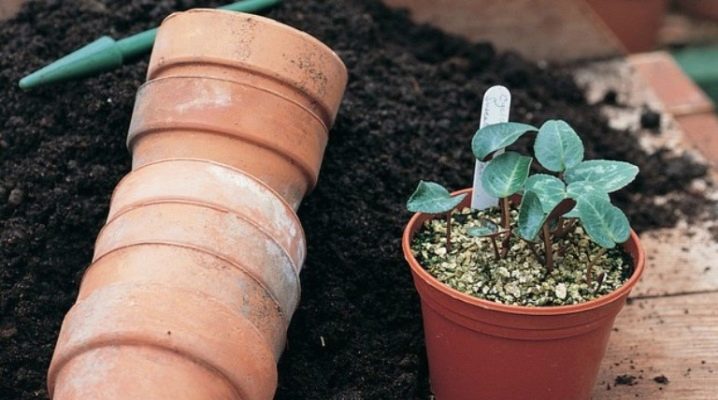
Cyclamen is a very beautiful and undemanding plant that can be easily propagated on its own at home. It will be possible to carry out the procedure using tubers, seeds, leaves or even sockets.
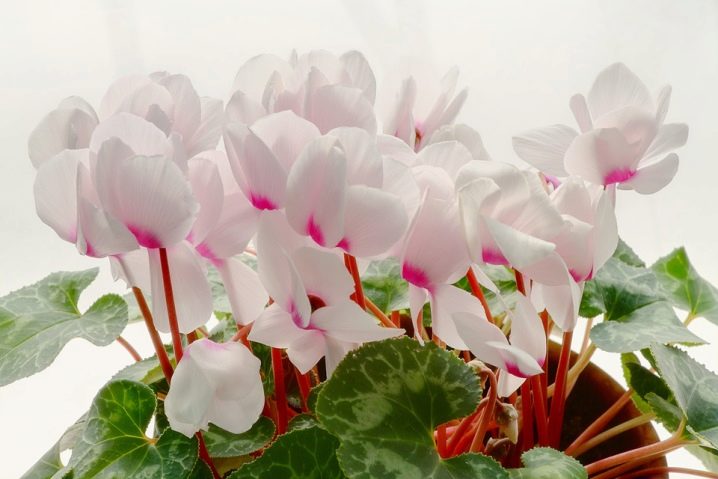
Peculiarities
At home, it is customary to grow two types of cyclamen.
- European is a flower, the height of which reaches 30 centimeters. The flat leaves are covered with a green with silver skin, and their underside is painted in a purple tint. In this case, the tuber is immersed in the substrate. The flowers grow white, pink or purple.
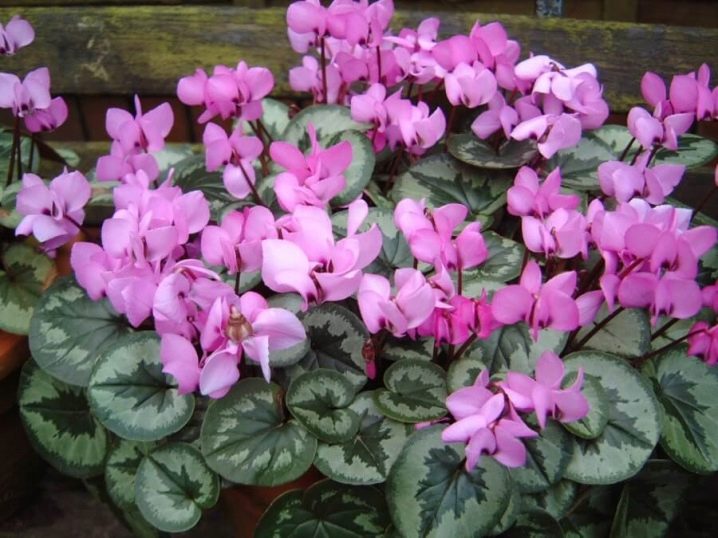
- Persian cyclamen differs from the European color of the leaf plate - pure green on the inside, as well as a protruding tuber. The flowering periods of these two varieties also differ.
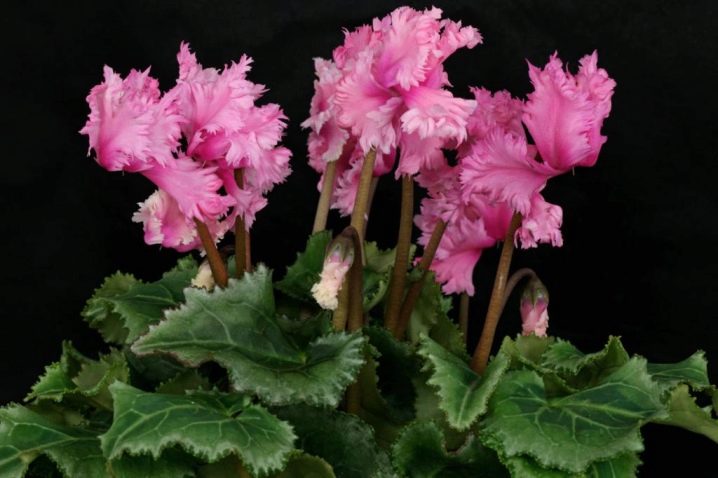
Reproduction of indoor cyclamen is successfully carried out in several ways. If a seed method is chosen, then it is recommended to independently create and collect seed material on your own, since the purchased one has poor germination. To do this, for several days, pollen is transferred from the flowers of some cyclamens to others using a soft brush. With successful pollination, the peduncle will begin to thicken and curl. A box filled with seeds will gradually form.
The seeds do not need to be dried, but before planting they will have to be soaked for one day in a liquid enriched with a stimulant and several crystals of potassium permanganate.
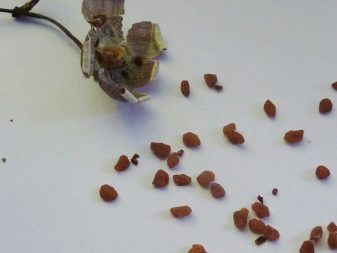
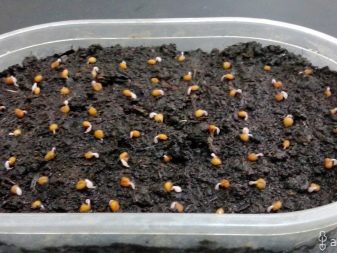
A ready-made substrate for succulents is most suitable for cyclamen. You can also make a mixture yourself from peat and deciduous compost, taken in equal proportions. It is poured in a layer of 6 or 7 centimeters. The bottom of the container must be covered with a high-quality drainage layer. It is collected either from expanded clay or from small foam balls that form a thin layer.
The drainage height should be between 2 and 2.5 centimeters in order to be able to protect the newly formed roots from excess moisture. The laid out substrate is spilled with liquid so that excess can drain through the holes in the bottom.
It is important to mention that any components taken from the garden must first be disinfected: either calcined in the oven or doused with boiling water.
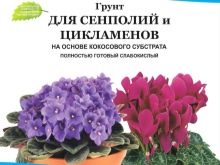
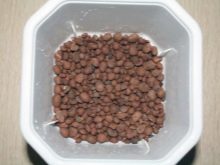

Reproduction methods
Tuber
Cyclamen at home can be propagated by a tuber, and even in two ways: either divide the existing tuber, or use daughter formations. It is correct to use the tuber after the plant has completed the flowering process. The formation is extracted from the soil, dried and divided into several parts. Each of them must have at least one kidney and full-fledged healthy roots. The wounds are treated with ash or crushed activated carbon. Do not forget about the disinfection of the instruments used.
After that, it is enough to plant the pieces in a nutritious soil and water so that there is enough moisture for the plant, but not in excess. If you pour the planting material, then it will rot. It should be mentioned that when a Persian cyclamen is propagated by a tuber, it should not be completely deepened into the ground, but left one third above the surface. In addition, it is worth pre-calcining the soil mixture, and then pouring boiling water over the delenki.
Propagated by cyclamen and daughter tubers.The step-by-step guide in this case is very simple: it is enough to separate the daughter formations and plant them in separate pots. In this case, the substrate should also be nutritious, and irrigation should be abundant, but not excessive. When performing the procedure, it is important that the entire tuber is covered with earth.


Seeds
It will be possible to dilute the plant using seeds, but in this case the cyclamen will need long and thoughtful care. In this case, the first flowers will sprout only after 1 year, and sometimes even in the third or fourth. The inoculum is preliminarily left for 12 hours in water or in a damp gauze in which the growth enhancer is dissolved. The planting itself is carried out in watered ground, placed in a container with holes at the bottom and drainage in the form of expanded clay. The substrate layer should be 8 centimeters. The seeds should not be deepened - it is enough just to spread them out so that about 4 centimeters are kept between the individual seeds.
From above, everything is sprinkled with a 1 centimeter thick substrate, and the container itself is tightened with plastic wrap or covered with glass. When the first shoots hatch, you can remove the shelter to allow the sun's rays to calmly reach the cyclamen. After about 3 months, small tubers will form and full-fledged leaves will sprout. Each sprout can be planted in a separate pot, sprinkling earth on the root system. The first 14 days, the plants are fed with ammonium sulfate, and after another 2 weeks - with potassium sulfur.
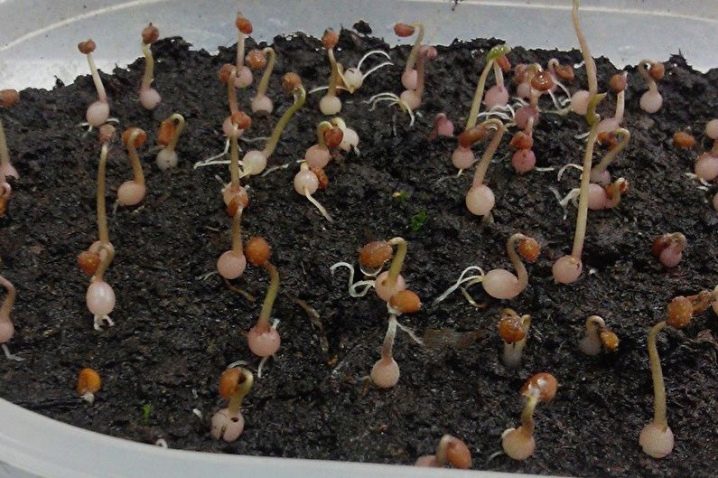
Leaves
Leaf propagation is considered a more difficult method. In this case, the leaf blade should already have small roots. Such a shoot is planted in moist soil and covered with a glass jar. Such a leaf has the ability to successfully hatch. However, it should be mentioned that the leaves with roots are characteristic only for the European cyclamen, and in the case of the Persian, this technique will not work. In addition, most often the leaf, after standing in the water, rots at the bottom and dries out at the top. However, this method is only recommended for experienced professionals.

Outlets
The most effective way is to reproduce cyclamen by rosettes, also called horns. This term refers to shoots on tubers. In mature plants, they are usually of sufficient length, so they can be easily broken off and planted in damp soil. The container is closed from above with a transparent glass jar or tightened with a plastic bag. If a moderately warm temperature is maintained in the room, the roots will begin to appear in about 2 weeks. Further, the cyclamen can already be looked after as a full-fledged adult plant. Choosing this method, you should understand that you should not take more than one horn, otherwise the flower will simply die.
Important: Persian cyclamen rosettes do not take root well, so this method is best used for the European variety.
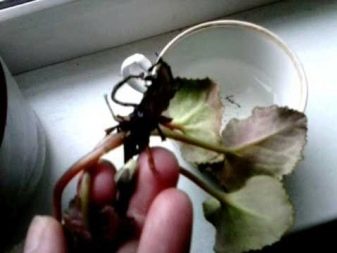
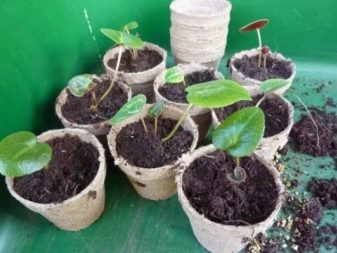
Follow-up care
Having propagated cyclamen, the young plant will have to immediately provide regular irrigation. It is important not to exceed the amount of liquid used, and also not to provoke rotting of the seed. The plant is much easier to cope with drought than excess moisture. The lighting in the room where young sprouts develop should be diffused, and the temperature should remain at +18 degrees, since the cyclamen prefers coolness. Do not place the pots near the battery, as the plant will quickly die.
Some experts recommend keeping the sprouts, especially those obtained from seeds, at a temperature of +15 degrees. Until the first leaf appears, the soil will have to be moistened daily. A dive is carried out when 2-3 leaves appear on the sprout. This usually happens in December. Top dressing is carried out a week after diving, but the concentration of fertilizers should be reduced by half.It is better to take ready-made mineral complexes, and in the spring add additional nitrogen to accelerate the appearance of green mass.
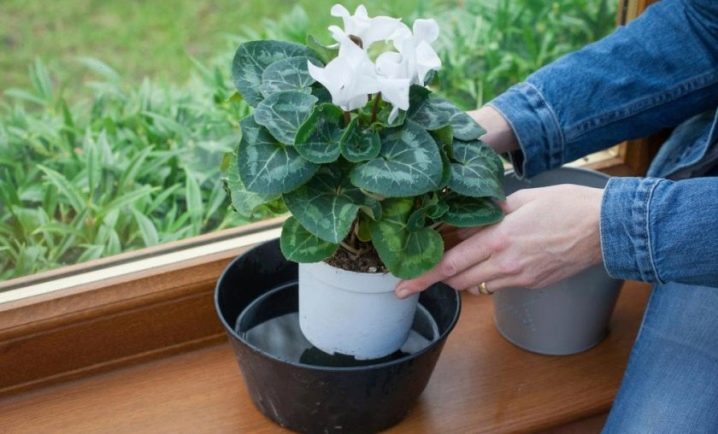
It is important not to forget about regular ventilation of the room, which should not create a draft.
It is worth mentioning that irrigation water should always be settled and even filtered, free of bleach and harsh impurities. The dust that appears on the leaves does not have to be washed off - you just need to shake it off with a brush or a slightly damp sponge. When the cyclamen outgrows the old pot, it should be moved to a new one, the diameter of which is only a few centimeters larger than the diameter of the previous one. If you choose an overly voluminous container for a plant, then it will begin to give all its strength to the development of leaves and roots, and flowering will not happen for a long time.
Possible problems
If the leaves of a young cyclamen begin to turn yellow, the reason may be both the high temperature in the apartment and dry air. The reasons are often combined. To prevent this situation, containers with plantings should be placed on window sills, under which there are no batteries, and regular spraying should be carried out. Alternatively, the pots can be placed on a pallet filled with constantly moistened pebbles. To quickly remedy the situation, the cyclamen will have to be immediately removed from the battery, transferred to a room where the temperature does not exceed +18 degrees, and also start spraying.
When the flowers are healthy, and the leaves still turn yellow, the problem may be an excessively high temperature. By returning the indicators to +18 degrees, it will be possible to eliminate the problem. Sometimes the leaf blades turn yellow due to the fact that the substrate is not sufficiently moisturized. It is clear that in this case it is enough to simply increase watering frequency. Finally, the leaves can turn yellow and fall off after flowering cyclamen, which is completely natural. This phenomenon suggests that the plant is simply rearranging itself to a dormant state. If the fall of the leaves is too intense, it is better to rearrange the plantings in other rooms.
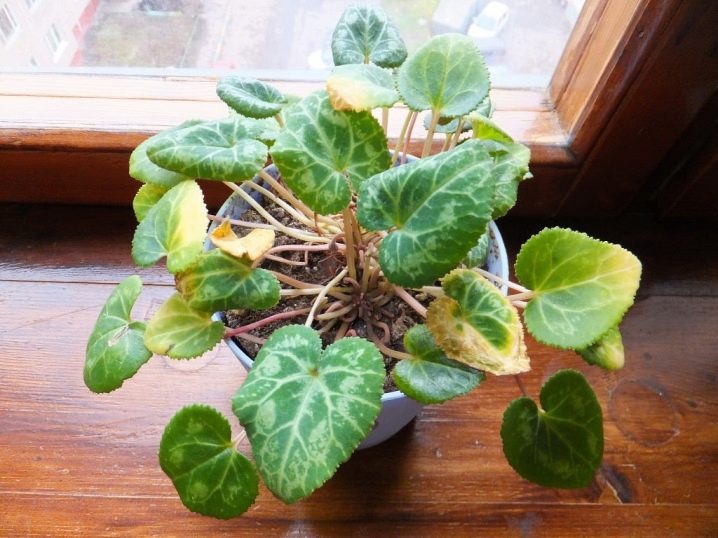
When the root system begins to rot, the problem may lie not only in the excess of liquid, but also in the fact that it pours directly onto the top of the tuber - its outlet. Otherwise, the core of the flower not only rots, but also becomes moldy. If the cyclamen begins to deform the leaves, this can signal the effect of pests. A miniature cyclamen mite cannot be seen on the surface of the leaf blade, but its effect leads to curling of the leaf edges and the cessation of their development. In such a situation, the damaged parts of the plant should be immediately eliminated, after which all plantings should be treated with insecticides.
When tubers for propagation are purchased in a store, it is important to choose those specimens that are free from any damage and manifestations of rot. Having brought them home, it is worth additionally spraying the samples with a growth accelerator.
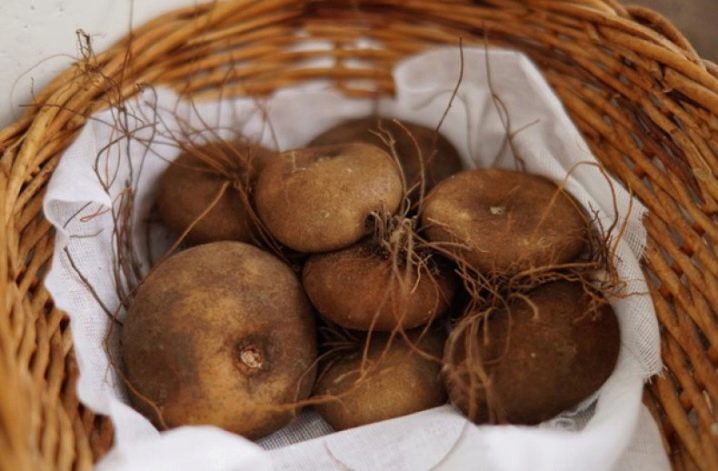
Gray rot occurs when the plant is kept in high humidity and the temperature remains too low. As a preventive measure, experts advise regularly ventilating the room, and keeping the temperature at +18 degrees.
You will learn more about the reproduction of cyclamen at home in the following video.







































































































The comment was sent successfully.